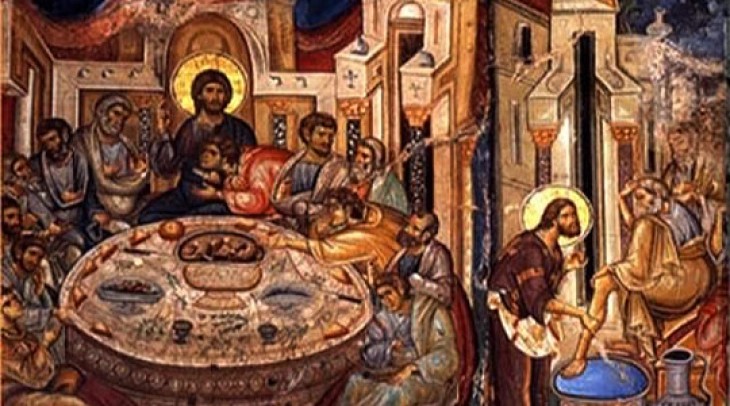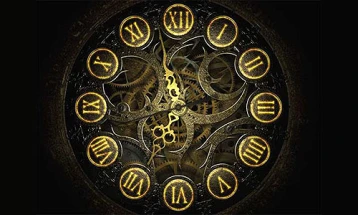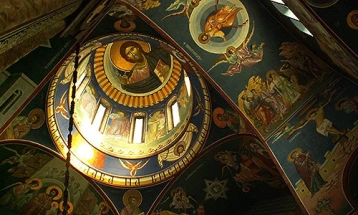Religious calendars
- Constantine’s parents were the Emperor Constantius Chlorus and the Empress Helena.
- Post By Angel Dimoski
- 09:52, 3 June, 2023

3 June 2023 (MIA)
Macedonian Orthodox Church Calendar
The Holy Emperor Constantine and the Empress Helena
Constantine’s parents were the Emperor Constantius Chlorus and the Empress Helena. Chlorus had further children by another wife, but by Helena he had only the one, Constantine. Constantine fought two great battles when he came to the throne: one against Maxentius, a tyrant in Rome, and the other against Licinius not far from Byzantium. At the battle against Maxentius, when Constantine was in great anxiety and uncertainty about his chances of success, a shining cross, surrounded by stars, appeared to him in the sky in full daylight. On the cross were written the words: `In this sign, conquer!’ The wondering Emperor ordered that a great cross be put together, like the one that had appeared, and be carried before the army. By the power of the Cross, he gained a glorious victory over enemies greatly superior in number. Maxentius drowned himself in the Tiber. Immediately after this, Constantine issued the famous Edict of Milan, in 313, to put an end to the persecution of Christians. Conquering Byzantium, he built a beautiful capital city on the Bosphorus, which from that time was named Constantinople. At this time, Constantine fell ill with leprosy. The pagan priests and doctors advised him to bathe in the blood of slaughtered children, which he refused to do. Then the Apostles Peter and Paul appeared to him and told him to seek out a bishop, Sylvester, who would heal him of the disease. The bishop instructed him in the Christian faith and baptised him, and the leprosy vanished from the Emperor’s body. When there was discord in the Church about the troublesome heretic Arius, the Emperor summoned the first Ecumenical Council in Nicaea, in 325, where the heresy was condemned and Orthodoxy confirmed. St Helena, the Emperor’s devout mother, was very zealous for the Christian faith. She visited Jerusalem and found the Precious Cross of the Lord, and built the Church of the Resurrection over Golgotha and many other churches in the Holy Land. This holy woman went to the Lord in 327, at the age of eighty. The Emperor Constantine outlived his mother by ten years and entered into rest at the age of about sixty in 337, in the city of Nicomedia. His body was buried in the Church of the Holy Apostles in Constantinople.
Catholic Calendar
St. Charles Lwanga and Companions Martyrs of Uganda
For those of us who think that the faith and zeal of the early Christians died out as the Church grew more safe and powerful through the centuries, the martyrs of Uganda are a reminder that persecution of Christians continues in modern times, even to the present day. The Society of Missionaries of Africa (known as the White Fathers) had only been in Uganda for 6 years and yet they had built up a community of converts whose faith would outshine their own. The earliest converts were soon instructing and leading new converts that the White Fathers couldn’t reach. Many of these converts lived and taught at King Mwanga’s court. King Mwanga was a violent ruler and pedophile who forced himself on the young boys and men who served him as pages and attendants. The Christians at Mwanga’s court who tried to protect the pages from King Mwanga. The leader of the small community of 200 Christians, was the chief steward of Mwanga’s court, a twenty-five-year-old Catholic named Joseph Mkasa (or Mukasa). When Mwanga killed a Protestant missionary and his companions, Joseph Mkasa confronted Mwanga and condemned his action. Mwanga had always liked Joseph but when Joseph dared to demand that Mwanga change his lifestyle, Mwanga forgot their long friendship. After striking Joseph with a spear, Mwanga ordered him killed. When the executioners tried to tie Joseph’s hands, he told them, “A Christian who gives his life for God is not afraid to die.” He forgave Mwanga with all his heart but made one final plea for his repentance before he was beheaded and then burned on November 15, 1885.







